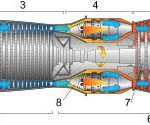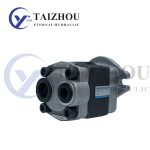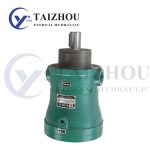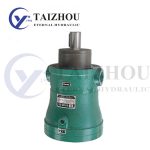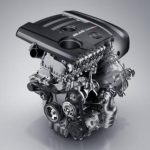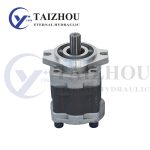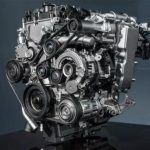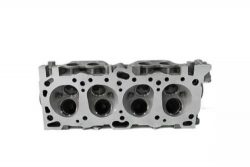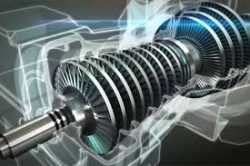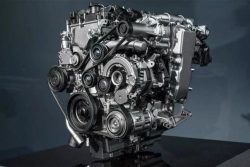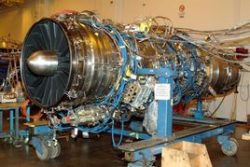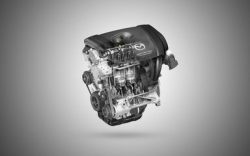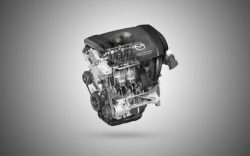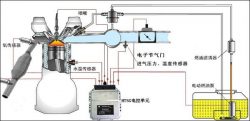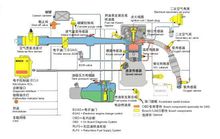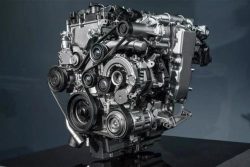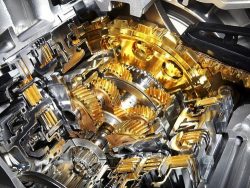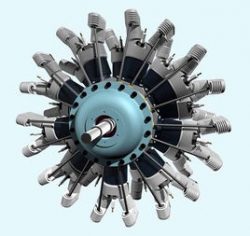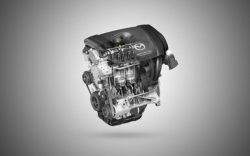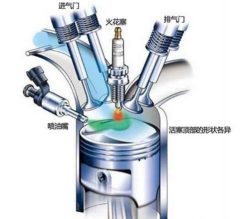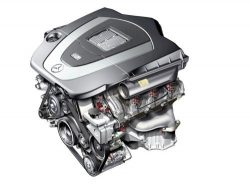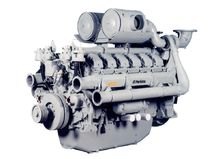Eaton Char-Lynn Motor , Classification Of Turbine Motor
Turbine engines have also recently been used as large generators. The Eaton Char-lynn Motor next introduces the characteristics of the two turbine engines.
A. Turbojet engine
(mainly used for fighter aircraft, as well as supersonic passenger aircraft, such as the Concord);
This type of engine has the advantages of quick acceleration and simple design, and is an early type of jet engine. However, if the turbojet engine is to increase the thrust, it is necessary to increase the temperature and pressure ratio of the gas before the turbine, which will increase the exhaust velocity and lose more kinetic energy, thus creating a contradiction between increasing thrust and reducing fuel consumption. Therefore, turbojet engine fuel consumption is a fatal weakness for commercial civil aircraft.
B. Turbofan engine
(Mainly used in civil jets and bombers, early warning aircraft, etc., is the most widely used turbine engine)
The beauty of turbofan engines is to increase the temperature before the turbine without increasing the exhaust speed. The structure of the turbofan engine is actually a few more stages of turbines in front of the turbojet engine, which drive a certain number of fans. Part of the airflow drawn by the fan, like a regular jet engine, is fed into the compressor (termed “the intrinsic channel”) and the other part is discharged directly from the periphery of the turbojet engine casing (“outer duct”). Therefore, the gas energy of the turbofan engine is distributed to the two exhaust gas streams generated by the fan and the combustion chamber, respectively. At this time, in order to increase the thermal efficiency and increase the temperature before the turbine, more gas energy can be transmitted to the outer duct through the fan through the appropriate turbine structure and the fan diameter, thereby avoiding a large increase in the exhaust speed. The thermal efficiency and the propulsion efficiency are balanced, and the efficiency of the engine is greatly improved. High efficiency means low fuel consumption and the aircraft’s range is further. From the structural point of view, the current turbofan engine can be divided into single rotor, double rotor, and three rotor.
Turbofan engines can be subdivided into no-force and afterburners. The former not only has a high temperature in front of the turbine, but also has a large fan diameter and a bypass ratio of more than 8. The engine is more economical than a turbojet engine, and the available flight speed is higher than that of a piston engine. Wide-ranging applications such as military transport aircraft with a maximum speed of around M0.9. According to the principle of the heat engine, when the power of the engine is constant, the more the working medium that participates in the propulsion, the greater the thrust obtained. The non-energized turbofan engine has a large fan diameter, the air flow is large, and the thrust is also large. . At the same time, due to the low exhaust speed, the noise of this engine is also small. The afterburning turbofan engine does not work in the cruising of the aircraft. At this time, it is equivalent to a non-energized turbofan engine, but in order to pursue a high thrust-to-weight ratio and reduce the resistance, the engine is ducted. The ratio is generally below 1.0. During high-speed flight, the engine’s afterburner is opened, and the air in the outer duct and the gas after the turbine enter the afterburner to inject the fuel and burn again, so that the thrust can be greatly increased, even exceeding the afterburning turbojet. And as the speed increases, the engine’s afterburner ratio will rise and the fuel consumption rate will decrease. The afterburning turbofan engine has the characteristics of low fuel consumption at this low speed and large thrust-to-weight ratio when the force is applied.
Turboprops (mainly used in propeller aircraft, many older piston propeller engines have been retrofitted with turboprop engines to extend flight life);
Turbine shaft engine (mainly for helicopters)
In addition, there is a combination of propeller and fan blades.
In terms of jet propulsion, there are also:
Ramjet engines (mainly used for missiles and drones), pulse jet engines with intermittent combustion principles, and engines of different types, such as turbo/jetjet engines.
https://www.xjetl.com

